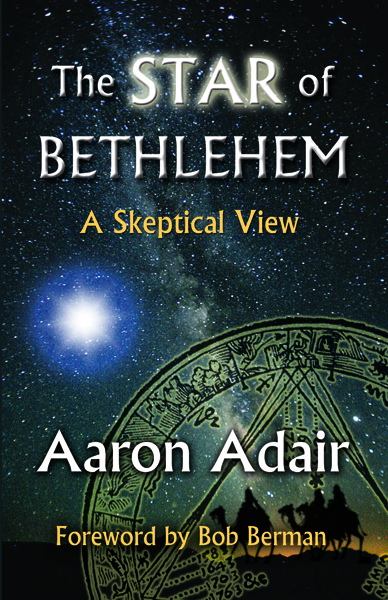(RNS) Aaron Adair earned his Ph.D. in physics from Ohio State University. A former Catholic who now identifies as an atheist, he just wrote “The Star of Bethlehem: A Skeptical View,” which examines theories about the star’s movement. Next October, he will travel to the Netherlands to speak at a scholarly conference about the star of Bethlehem. This interview was edited for length and clarity.
Q: The Gospel of Matthew describes the star as “rising in the east” and leading the Magi from north to south. He also describes it as hovering over the house where Jesus stayed. What could have done all those things? Could it have been a meteor or a comet?
A: It could not have been a meteor because they are extremely common and short-lived and could not have hovered over Jesus’ location. There was a comet in about 5 B.C.E. but it would have been moving in the wrong direction. And comets were considered the most ominous sign in ancient astrology, not something that would herald the coming of a Jewish king.
Q: What about a supernova or an alignment of the planets?
A: Well, it could not have been a supernova because they do not move in the sky and we have no historical evidence that any were seen at the time — and someone would have noticed a supernova. And as for an alignment of the planets, they do not move the way the star of Bethlehem is described as having moved.
Q: My favorite is that the star was actually a UFO. Why would anyone believe this theory?
A: It actually fits the description of the star in the Gospels. A UFO can move around and look like anything it wants to, given sufficient technology. It could lead people to a location and hover over a particular spot and say, for example, “Eat at Joe’s.” And sufficiently advanced aliens could have communicated with the Magi. But all this just means it is imaginable. Of course the problem is, we don’t know if there are intelligent aliens out there or whether they traveled to Earth to mess around with a few local Palestinians.
Q: If the star of Bethlehem wasn’t historical, was it a symbol?
A: I think the story of the star is written in a way that in part tries to co-opt a common myth of the Romans — that a star guided Aeneas to found the city of Rome. Matthew was superseding that myth by using the star to say Jesus, even as a baby is more worthy of worship than the warrior Aeneas ever was. This is a common practice in mythology — co-opting an old myth and changing it to express new values. And it seems to be there as part of the Gospels’ fulfillment of Old Testament Scripture. There was a prophecy of a star rising that would symbolize the new Jewish king. It was to show that Jesus was the new Moses, the new King David and the great final prophet of the Christian faith. It is there to align the New Testament with Jewish Scriptures.
Q: What is it about the star of Bethlehem that makes us want to prove, or disprove it?
A: For believers, it would be a way to have science tell us that something from the Gospel stories is true. And for the broader audience, it would show a harmony between science and religion, a place where most people think there’s conflict. I think it is comforting to believe it is actually true. It was comforting for me when I first learned about it and I was pretty much a Catholic deist at the time. It said there is a God who does not need miracles to get things done and that seemed like a more interesting and amazing God than one who does.
Q: Why did you want to write this book?
A: I did not write the book in such a way to overthrow Christianity, only literalist forms of it at best. I argue about the literary nature of the gospel and the message it is going for, so a liberal Christian would have no problems with it. So I may disprove the historicity of the star of Bethlehem, but I help discover the real message in the story.
YS/AMB END WINSTON






